Honda CR-V vs Kia Sportage comparison test: Which compact hybrid SUV is best?

A great deal of thought went into the 2023 Honda CR-V and 2023 Kia Sportage, and in each case, we’ve determined that the best variant to drive is the Hybrid. We’ve given both excellent marks and would unquestioningly recommend them to prospective buyers, but if you’ve narrowed the market this far and still struggling to choose, which one is ultimately the right call? Well, settle in, because we’ve got an answer.
The compact crossover SUV segment is huge. Honda sold 238,000 CR-Vs in 2022 — almost as many as Civic and Accord combined. Kia moved a far more modest 125,200 Sportages in the same time period. Like the midsize sedan of yore, it’s the segment in which virtually every automaker competes; to not do so is to relegate oneself to the margins of the modern automotive market. Where the Accord and [whatever Kia was calling it that week] once reigned, the compact crossover has cemented a new dynasty, and the CR-V and Sportage families rule their builder’s respective roosts.
These two have virtually everything in common. They’re available in both gas-only and hybrid variants; they seat five; they’re even dimensionally identical for the most part. In a blind reading of basic stats, you’d be hard-pressed to tell them apart. The Kia is more powerful and is offered with an even-punchier plug-in powertrain, while the Honda leans a bit more conservative. This test was tight — really tight. After Autoblog Electric Editor John Snyder and I spent the day putting each through its paces, the winner and loser were determined by single digits in a scoring system that could produce a weighted total of 160 points. Read on to see exactly how each shaped up.
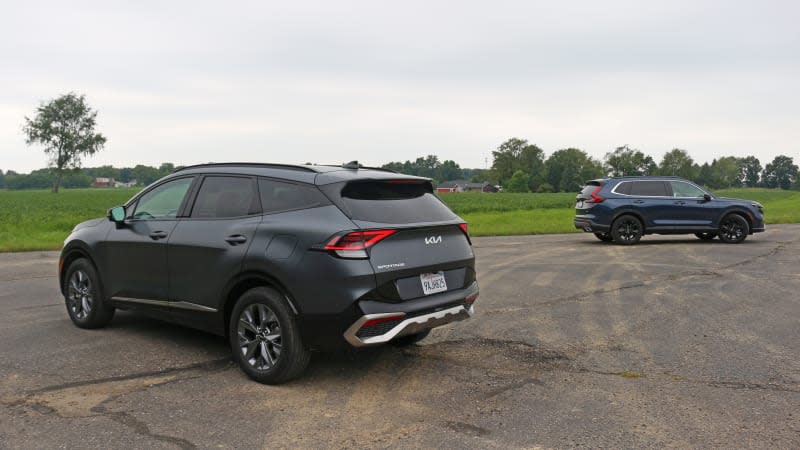
Second Place: 2023 Kia Sportage Hybrid SX Prestige
While the CR-V comes in both hybrid and standard flavors, Kia offers the Sportage in three permutations. This, the “vanilla” hybrid, represents the middle; there’s a gasoline-only entry beneath it and a plug-in option above it. Neither concerns us today, but hey, choice is good.
One could forgive Kia for offering a bland hybrid to encourage more shoppers to spring for the pricier PHEV, but such is not the case. The Sportage Hybrid packs 227 horsepower and 258 pound-feet of torque (+23 horses and 11 pound-feet over the Honda) and with EPA fuel economy estimates of 38 mpg straight across the board (city, highway and combined), may even be situationally more efficient than the CR-V, which tops out at 34 mpg highway and 37 combined.
As you might suspect, the Kia packs a far mightier punch than the Honda, with solid low-end grunt and plentiful passing power even at highway speeds thanks to the presence of not only an electric motor but a turbocharger as well. That extra oomph doesn’t really translate to excitement, however. The Kia’s six-speed automatic transmission, likewise, is simply there, though we suspect it contributes to one of our small gripes: While the brakes feel plenty substantial, stops and starts are a bit awkward. The Sportage bucks perceptibly (though not aggressively) in stop-and-go driving. The Sportage’s gearbox is also quite eager to chase higher gears, leading to particularly low revs and the occasional, distant four-cylinder drone in city driving.
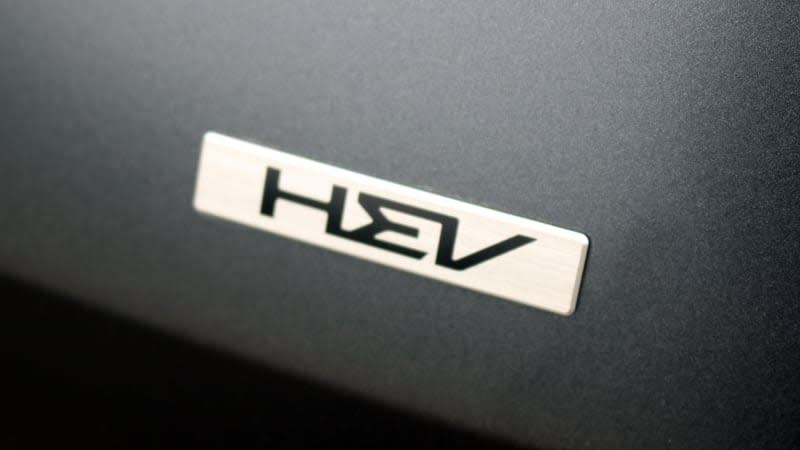
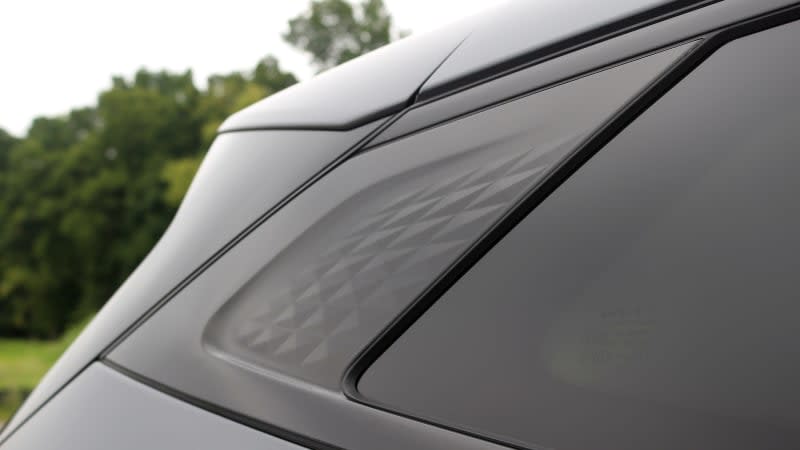
At speed, the Kia’s finicky throttle/brake relationship is quickly forgotten; it’s all about the chassis here. On a winding road, the Sportage feels a bit ponderous. “Feels hefty, and a little nose-heavy, but the AWD helps with cornering stability,” Snyder notes. Overall, the Sportage feels over-dampened and under-sprung. It’s able to soak up some severe pavement defects at speed without rattling your teeth, but as a trade-off, you’re in for quite a ride. You won’t feel the sharp impacts as much as you do in the CR-V, but you’ll be able to identify every bit of excess fat stored in your body with every bob and jiggle.
Kia’s greatest edge here is in driver assistance tech. Kia’s Highway Drive Assist (not to be confused with the more advanced HDA2 offered in other Hyundai Group models) does a better job than Honda’s included suite, and even its basic assist functions are less intrusive. I could personally do without most of the gimmicks being incorporated into Hyundai and Kia’s newer driver safety suites (cruise control curve assist? Come on) but the bulk of the tech is tolerable and dependable.
From the city to the open road and the divided interstate, one element of the Kia’s personality stood out the most: Everything seems to happen a half-step removed from the driver. There’s a distance to it all — the almost nonexistent exhaust note, the more-isolated ride, the constant notion that there’s more heft to the car than its feedback lets on. But the upside to that isolation is that the Sportage presents a bit more robustly, as if it might provide a more effective cocoon between you and the outside world. And that’s where the cabin comes into play.
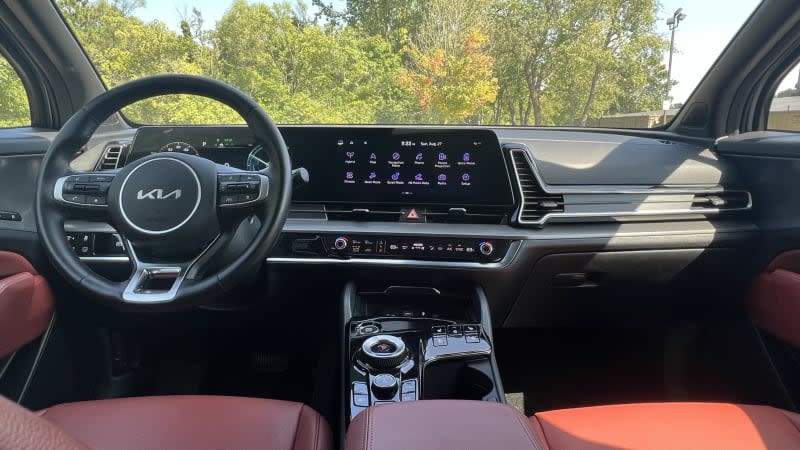
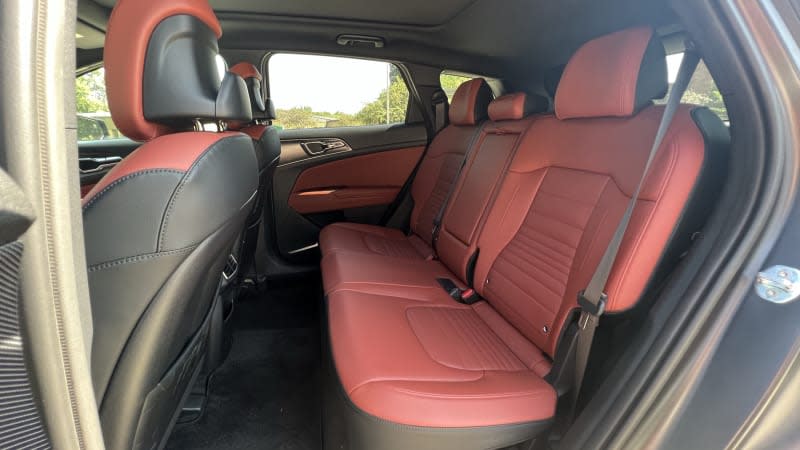
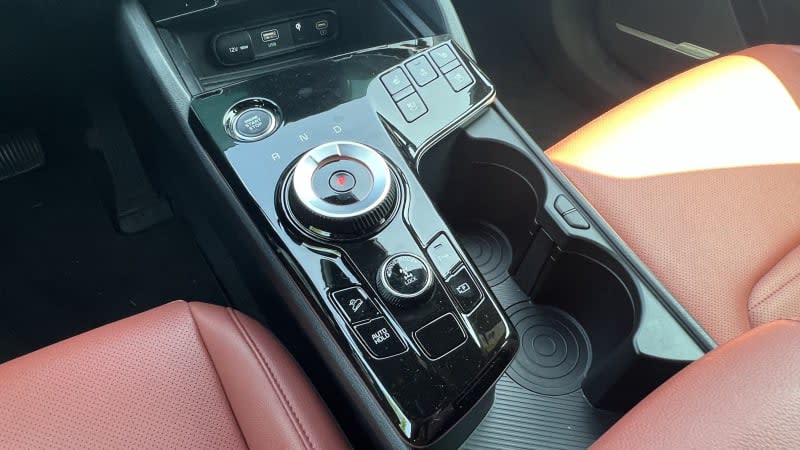
“You can tell a lot more effort went into making the Kia exciting to look at, both inside and out,” Snyder notes. “It has a more interesting shape, and you can get a matte paint finish (but don't do that to yourself). The interior definitely feels more artistic, with more interesting things to see and touch.”
Inside, the Sportage makes a spectacular first impression. Climbing in, the car feels substantial and the materials and design present well, creating a warmer and more inviting space than the CR-V. At least some of that beauty is only skin-deep, though. We both struggled to find a good seating position in the Sportage — I found myself still making minute adjustments miles into my drive — but once settled, we had few complaints.
It helps that we’re Intimately fam”Iia’ with Kia’s infotainment system. While the Sportage isn’t boasting quite as much tech and safety as the company’s latest and greatest, there’s enough carryover from the EV6’s tech that we found ourselves right at home (read our long-term EV6 updates here). Unfortunately, the latest Hyundai & Kia infotainment suites have some technical and functional baggage that neither OEM has yet completely overcome. On the feature side, that translates to high-end infotainment suites that lack wireless Android Auto and Apple CarPlay. Both are available on lower Sportage trims, but due to some packaging weirdness, aren’t found on this loaded example.

More importantly, though, the Kia’s tech and infotainment presents a steeper learning curve than the Honda’s, which is remarkably conventional despite offering similar levels of tech and better top-to-bottom Android Auto/Apple CarPlay integration. Kia’s system requires toggling between different screens to hunt down even common functions. It’s a far sexier system than the Honda’s, but the user experience leaves more to be desired. Our test vehicle was also misbehaving, returning server errors when I tried to use the voice commands for navigation. This is the first such roadblock we’ve encountered with Kia’s nav system, so we’recontent to write it off to an issue with this particular car.
The same general theme continues throughout the Sportage’s cabin. The back seat looks good and offers USB-C charging ports conveniently affixed to the front seatbacks. The seats are reasonably comfortable and rear-seat legroom is virtually identical to that of the Honda’s both on paper (41.3 inches for the Sportage vs. 41.0 for the CR-V) and in practice. The Kia gives up just a touch more headroom thanks to the slope of its rear cabin, but the difference is less than a half an inch. There’s not much in the way of bonus storage back here, but the same is true of the CR-V, so that’s a wash.

 Yahoo Autos
Yahoo Autos 
